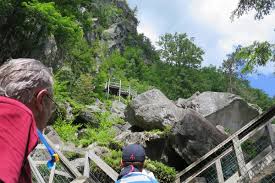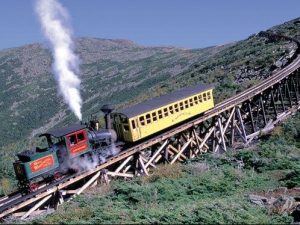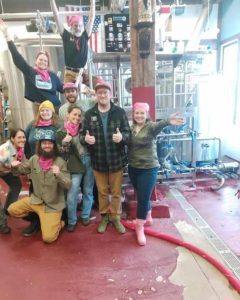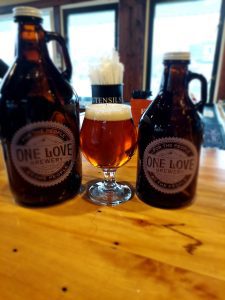The White Mountains region is vast. Even if you’re a long-term local, there’s still more to discover. Given the breadth of activities, history, and more, sometimes a helping hand is just what you need to get the most out of your vacation or staycation. Let us direct you to some resources that can guide you forward.

Alpine Adventures of all sorts
There’s no shortage of tour options at Alpine Adventures! Try a Super Skyrider Zipline Tour where you can enjoy three hours of the biggest, highest, and fastest options they have to offer. You could take advantage of the Timberline Zipline Tour with dual ziplines. You could get psyched up for the Tree Top Zipline Tour which is perfect for all levels. And you could also jump on board with the Side X Side tour that takes you off-road! No matter what you choose, there are options to suit your tastes.

Lost River Gorge & Boulder Caves individuation
You can be your own guide at Lost River Gorge & Boulder Caves! With one mile of boardwalk and 11 astounding caves to explore, this could be an all-day adventure for you, your family, or a group of friends.
Are you seeking a bit of mystique with your exploration? Consider a lantern tour! This could be a fun, active date night or something special for friends. They also offer group rates for larger packs of people. And of course, they also offer add-ons like mining options that captivate all ages. No matter who you want to tour with, this is a great choice of destination.

Loon ski lessons
If you are interested in learning a new skill from the professionals consider a ski lesson from the experts at Loon! They offer private lessons for ages two and up and group lessons for various age groups at affordable rates. They even offer rentals if you don’t have your own equipment! Stress-free and fun-filled!

Ride the Railways
A standby and tradition for locals and tourists alike is the Mount Washington Cog Railway. Using classic steam and modern biodiesel locomotives, you and your group can climb the tallest peak in northeastern North America with ease and enjoyment. This is truly an unmissable touring opportunity. The views are something else!
The Granite State Scenic Railway is a beloved destination for rail enthusiasts and nature lovers alike. As you step aboard the vintage train, a sense of nostalgia washes over you, transporting you to a bygone era of steam locomotives and scenic journeys that offer breathtaking views of the White Mountains. Whether you’re a history buff captivated by the romance of rail travel or simply seeking solace in the serenity of nature, the Granite State Scenic Railway promises an unforgettable experience.
Muddy Paw Dog Sled Kennel doggy tours
Do you love dogs? Take a tour with them! Even when the snow has left the mountains, you can do a K9s & Kisses tour where you can spend intimate time with man’s (or woman’s) best friends. You can also take a 2 Mile Cart Tour with a snowless sled dog tour!
SledVentures snow and dirt experiences
Offering guided tours at beginner, intermediate, and expert levels, SledVentures is a top choice for those who want to experience snow aboard a snowmobile. Though this winter has already turned into spring, you can still try a SledVentures, but in ATV mode. Enter DirtVentures!
Out Back Kayak: ATV Tours and Snowmobile Rentals snow and dirt fun
Also offering guided ATV and snowmobile tours is Out Back Kayak: ATV Tours and Snowmobile Rentals! They can provide tours ranging from thirty minutes to one and a half hours to anyone 12+ with either an OHRV license or a driver’s license.

Team O’Neil Rally School thrills
Have you ever wanted to drift like the stars in Fast & Furious? This is kind of like that, but totally safe! Team O’Neil Rally School offers a thrilling experience from professionals you can trust
Whether you’re seeking private training or group experiences, there’s always a way to get a fresh perspective on driving.
The concierge experience
Are you looking for adventure, but aren’t sure where to start? RiverWalk’s Adventure Concierge service can help! They know better than anyone how to help you make the most of your White Mountains trip. Excursions, special occasions, and anything else you can dream up are not beyond the scope of their knowledge.
Guiding you home
If you’d like to move here, there are plenty of fabulous real estate agents who can help you live here! Some include Alpine Lakes Real Estate, Century 21 Mountainside Realty, and Polimeno Realty. And if you simply want to feel like you’re home while visiting, choose one of these options for vacation spots – Woodstock Farmhouse, Loon Reservation Service, Randy’s Lil Red Caboose, or Franconia Notch Vacations. Whether you stay for a lifetime or a seasonal stay, you’ll be more than welcome by our expert area hosts.

Being hospitable
Even the waitstaff and bartenders in the White Mountains can serve as tour guides! After all, they’ve seen and heard it all from guests. Some of the best are from Woodstock Inn Brewery. Get a beer, a meal, and an itinerary from people who know the area personally.
Regional knowledge
If you’re looking for a guide to any kind of business or attraction in the area, the Western White Mountains Chamber of Commerce is here to help. As far as online resources, we have a comprehensive member business directory here and we also produce helpful blogs (like this one you’re reading) each month to ensure you know what’s fresh and fun in our region. You can also always call or email us if you’d like to speak with someone personally.
–
Whether you’re here for a trek up a beautiful mountain or looking to reconnect atop a zipline, a guided White Mountains experience is waiting for you. We can’t wait to see your smiles.

For state-wide information, head to VisitNH.gov.

Copyright (C) 2024 Western White Mountains Chamber of Commerce. All rights reserved.

















































 Dog Sledding
Dog Sledding

















 During Laconia Motorcycle Week® it’s not unusual to see bikes of all kinds lining the road to this popular destination. Some riders choose to stay there overnight year after year (a great choice!) while others come for the delicious beer and food.
During Laconia Motorcycle Week® it’s not unusual to see bikes of all kinds lining the road to this popular destination. Some riders choose to stay there overnight year after year (a great choice!) while others come for the delicious beer and food.  There are several ways to enjoy Mount Washington. You could take your motorcycle up the mountain directly, or if you would rather include non-riding family members or friends you can choose to ride the
There are several ways to enjoy Mount Washington. You could take your motorcycle up the mountain directly, or if you would rather include non-riding family members or friends you can choose to ride the 
 Polly’s Pancake Parlor
Polly’s Pancake Parlor























































